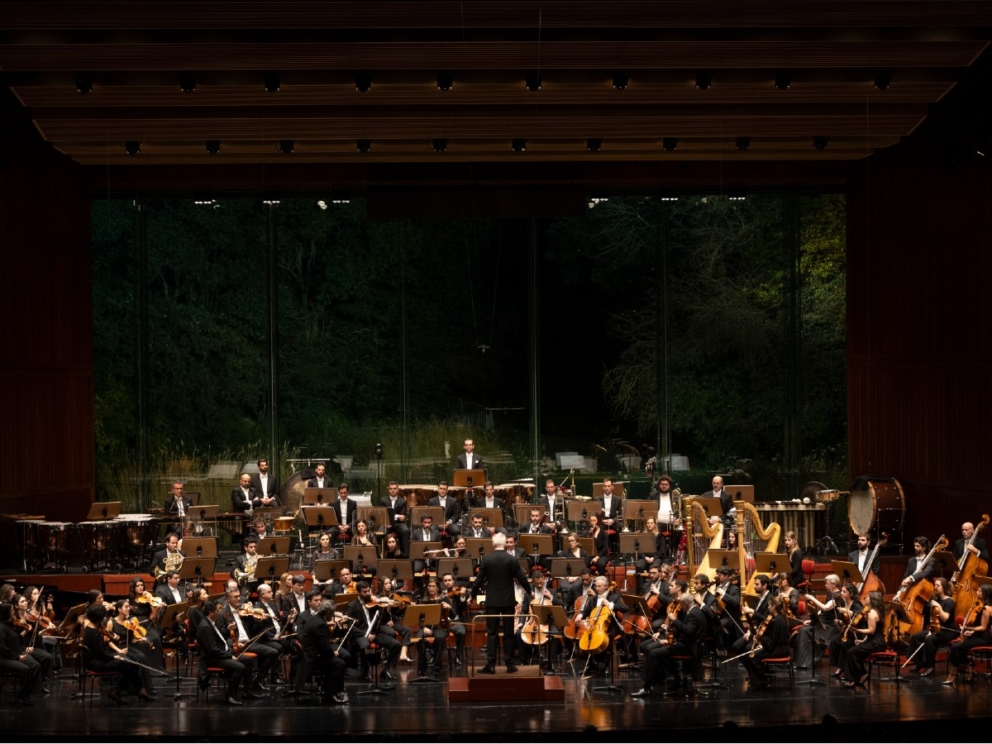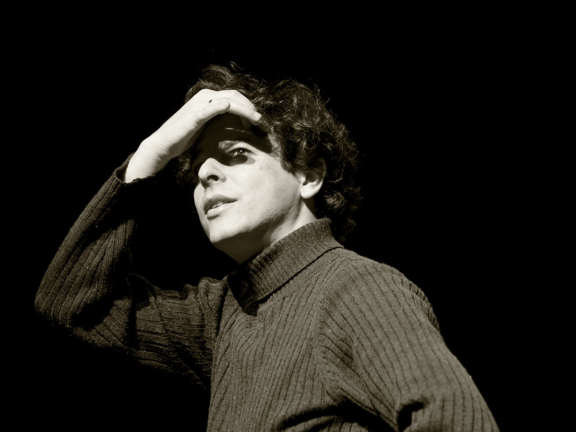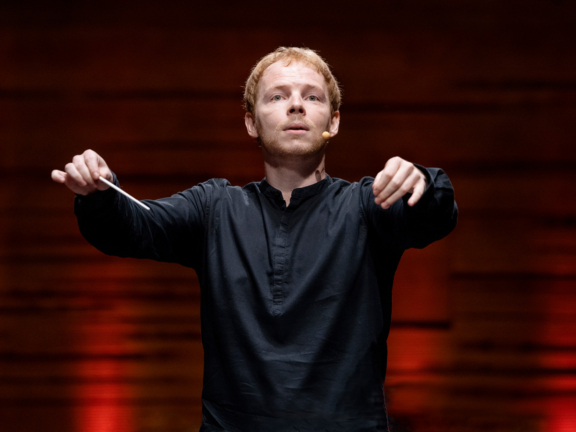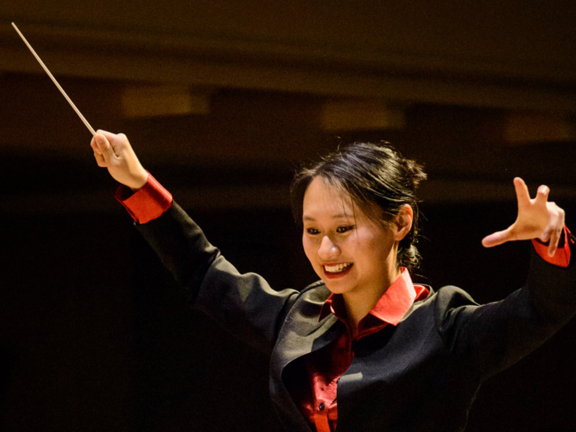
Music History in Symphony
Sunday Concerts
Event Slider
Date
- / Cancelled / Sold out
Location
Grand Auditorium Calouste Gulbenkian Foundation- Rui Pinheiro Conductor
- Commentary
-

Gulbenkian Orchestra
In 1962, the Calouste Gulbenkian Foundation decided to establish a permanent orchestral ensemble. Originally with only twelve musicians (strings and continuo) it was named “Orquestra de Câmara Gulbenkian”. This collective was successively enlarged and today the “Orquestra Gulbenkian” (the name it has adopted since 1971) has a permanent body of sixty instrumentalists, a number that can be expanded depending on the repertoire.
This structure allows the Gulbenkian Orchestra to interpret works from the Baroque and Classical periods, a significant part of 19th century orchestral literature and much of the music of the 20th century, including works belonging to the current repertoire of the traditional symphonic orchestras. In each season, the orchestra performs on a regular series of concerts at the Gulbenkian Grand Auditorium in Lisbon, where it has had the opportunity of working together with some of leading names of the world of music (conductors and soloists). It has also performed on numerous locations all over Portugal, in an effort to decentralize music and culture.
The orchestra has been constantly expanding its activities in the international level, performing in Europe, Asia Africa, and the Americas. In the recording field, Orquestra Gulbenkian is associated to labels as Philips, Deutsche Grammophon, Hyperion, Teldec, Erato, Adès, Nimbus, Lyrinx, Naïve and Pentatone, among others, and this activity was recognized with several international prizes.
-

Vera Dias
Bassoon
Vera Dias was born in Guimarães. She started at the Escola Profissional Artística do Vale do Ave at the age of twelve, where she began her musical studies learning bassoon with Jesus Coelho. Later, she studied with Paulo Martins, with whom she finished the Wind Instrumentalists Course, winning the Dr Manuela Carvalho Prize. At the age of eighteen she was admitted to the Staatliche Hochschule für Musik - Karlsruhe, studying bassoon with Günter Pfitzenmaier. She graduated in 2008 from Escola Superior de Música.
She has played with the Orquestra Portuguesa das Escolas de Música, the Orquestra Aproarte, the Orquestra Sinfónica Portuguesa, the Staatliche Hochschule für Musik - Karlsruhe Chamber Orchestra, the Pforzheim Chamber Orchestra and the Stuttgart Chamber Orchestra, and has given concerts throughout Europe and the East.
In 2003 and 2004, she was selected to join the European Union Youth Orchestra summer school, which she attended only in 2004. In 2003 she declined that opportunity to be able to compete for the Young Musicians Prize, in which she received 1st Prize in the Bassoon category. In 2004, she won 2nd Prize in the Landespolizei competition, in Karlsruhe.
She had a scholarship from the Calouste Gulbenkian Foundation from 2003 to 2006. She has been 1st Assistant Soloist with the Gulbenkian Orchestra since September 2006.
Wolfgang Amadeus Mozart
Symphony No. 40, in G minor, K. 550 (1th movement – Molto allegro)
Ludwig van Beethoven
Symphony No. 7, in A major, op. 92 (2nd movement – Allegretto)
Johannes Brahms
Symphony No. 2, in D major, op. 73 (3rd movement – Allegretto grazioso)
Piotr Ilitch Tchaikovsky
Symphony No. 5, in E minor, op. 64 (Finale)
Designed for a family audience, the Sunday Concerts are open to the sharing of the great works and the most relevant authors of the repertoire, stimulating the approach to orchestral music and helping to understand and decode the pieces interpreted. This programme will present a brief history of the symphony, based on the performance of creations by Mozart, Beethoven, Brahms and Tchaikovsky. Symphonic works gained expression during the classical period and have remained to this day as a matrix type of composition for a composer’s statement.
Sponsor Gulbenkian Music
The Calouste Gulbenkian Foundation reserves the right to collect and keep records of images, sounds and voice for the diffusion and preservation of the memory of its cultural and artistic activity. For further information, please contact us through the Information Request form.



